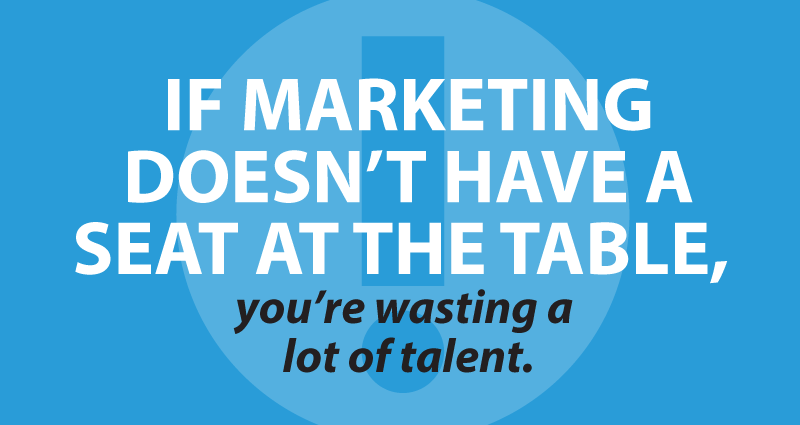
Five Ways to Get a Seat at the Table
A while back, we ran a poll asking credit union marketers “Does Marketing have a voice at your Board and/or Management meetings?”
To our surprise, we found that only half of the respondents indicated that they have a role in making policy and decisions. About a third felt that “I’m on the outside looking in.” and 15% chose “I am occasionally allowed to contribute.”
Frankly, that’s an awful lot of wasted talent. If marketing is not already directly involved in setting rates, developing products, and determining policies, or you’re not allowed to attend Board meetings, that’s a problem. You’re the representative of the credit union’s brand, and your role in decision-making is (or should be) vital.
So if you’re one of those talented credit union marketers “on the outside looking in”, what can you do about it?
1) Keep Your Mind on the Money — Some of marketing’s most important and unique roles are somewhat intangible — branding, service, and culture — but in order to find respect you first have to show your value in cold hard cash. Track everything, and set goals and track results in some way even for activities without a direct ROI. Marketing sometimes looks like voodoo to numbers people, so show them the connection.
2) Explode Out of Your Assigned Seat — Marketing can and should be everywhere — designing new products, helping to set rates, managing the web site, training new employees on the CU’s culture and brand, and contributing in Board meetings. Rewrite your job description if you have to.
3) Invite Yourself — Sitting around in a Board meeting is probably not your idea of a fun evening, but Marketing needs to be there. Who sets your loan and deposit rates? Ask nicely, and I bet they’ll let you sit in if you promise to be really quiet. But be prepared, too — they’ll probably start asking you for your input. In other words, go ahead and ask to be there and contribute wherever decisions are being made — your perspective is important.
4) Get Smart — Your credit union is dealing with millions of dollars in member money. Yep, there are lots of numbers involved, and you can’t escape them. Learn and understand what makes a credit union go — it’s a prerequisite for gaining some control. Take some classes (the hard ones with numbers in them). There are TONS of reference materials and classes available for all aspects of CU management.
5) Get Help — Be open with your CEO, CFO, and the rest of the management team about what you’re up to. Set goals for yourself, and don’t be bashful about asking for help. You might be amazed at the way your CEO or CFO lights up when you express a genuine interest in CAMELS ratings. In the process, you’ll learn how to speak their language. Maybe they’ll learn a little of your lingo. And you’ll probably find you’ve been on the same team all along.
- CU Numbers Need Marketing Love, Too - April 2, 2024
- Will it blend? The only CU fintech question that matters. - February 13, 2024
- Solving the CU marketing “now what?” problem - January 16, 2024
